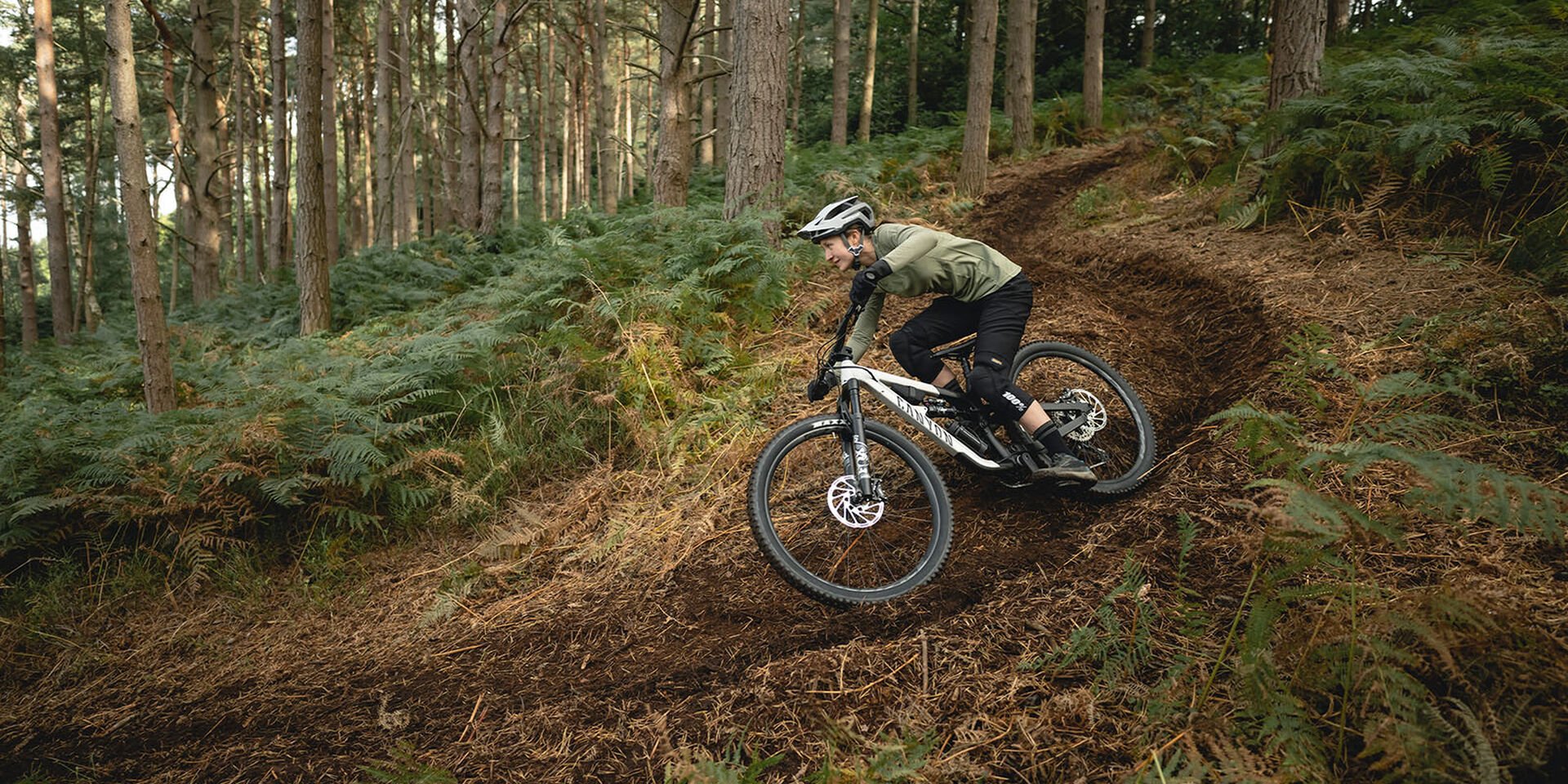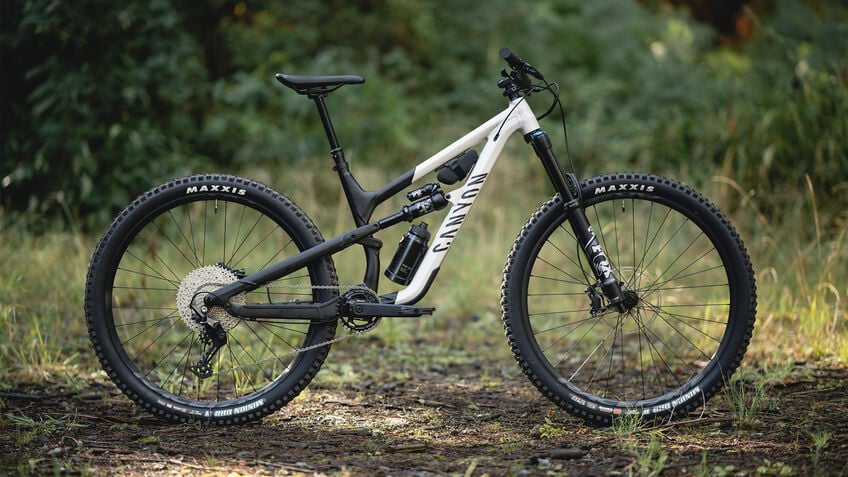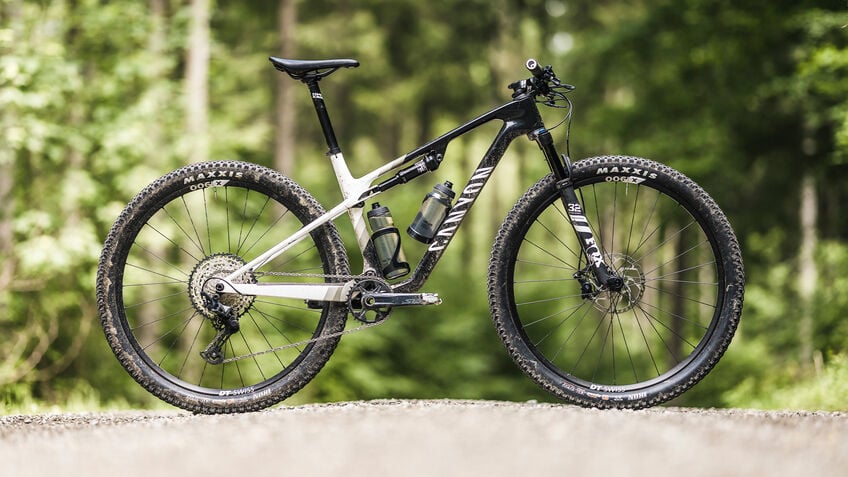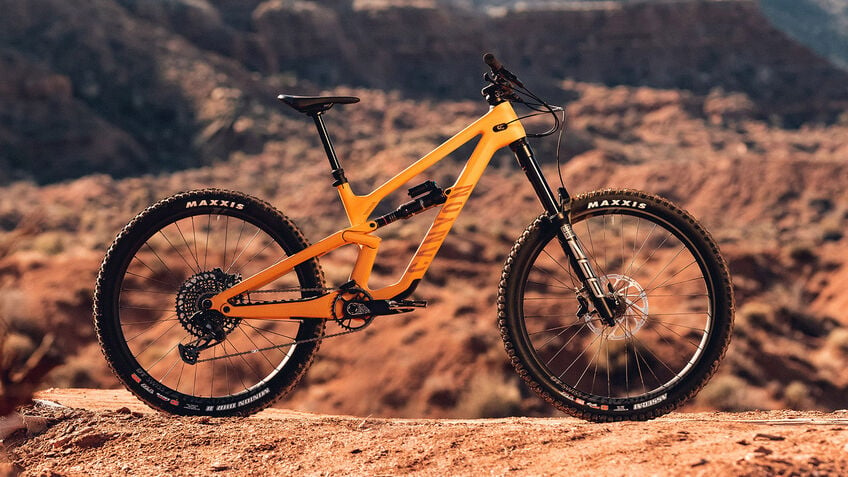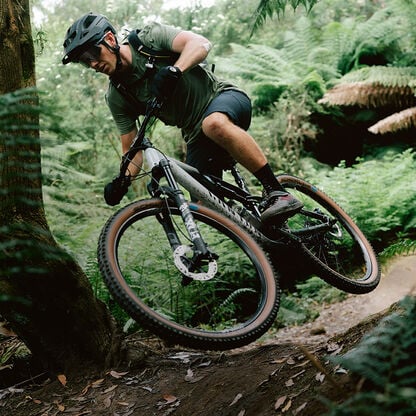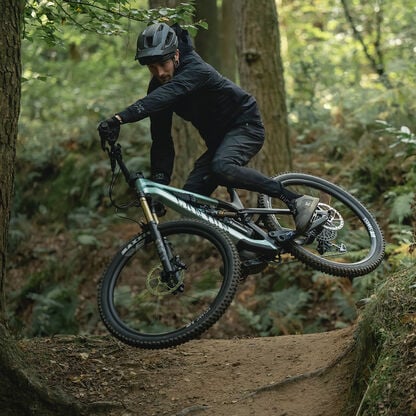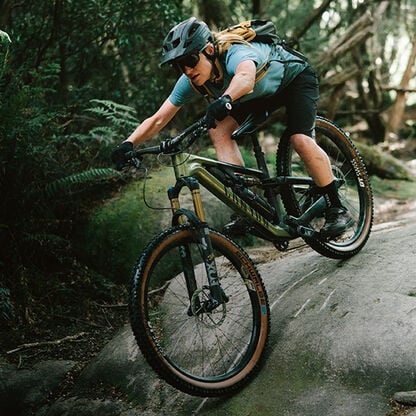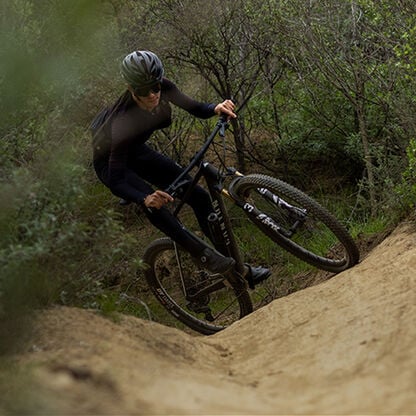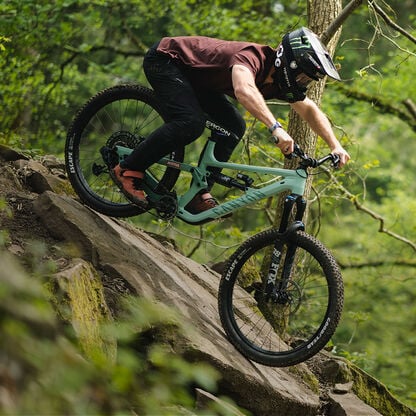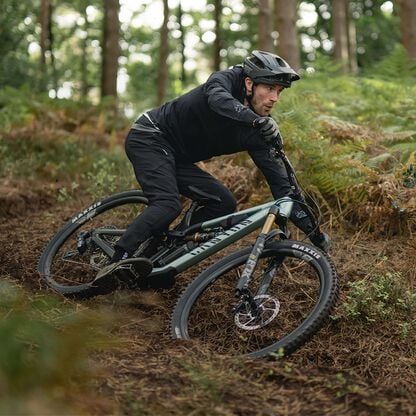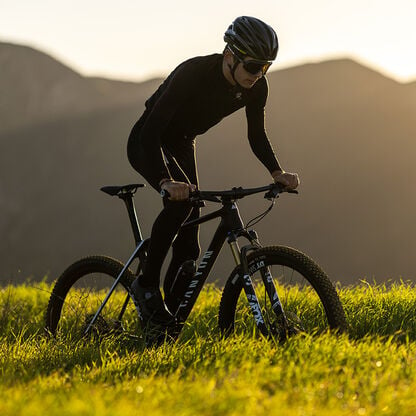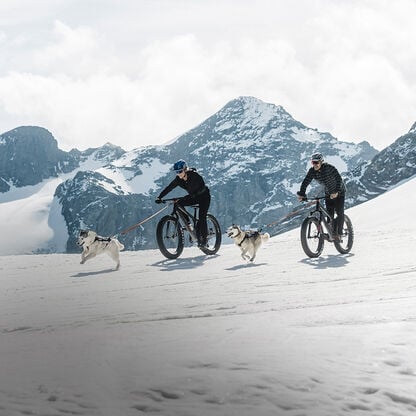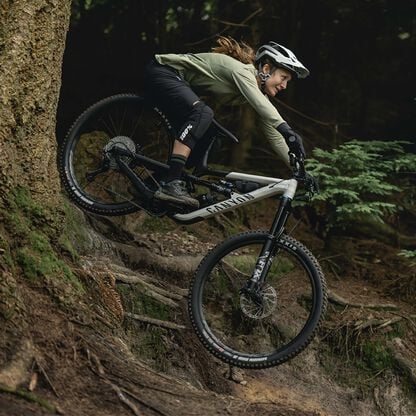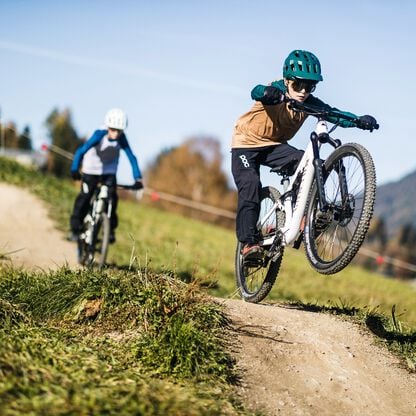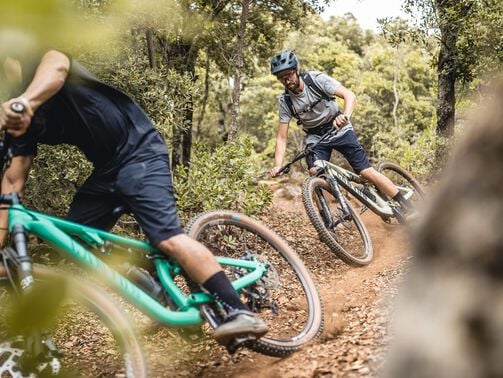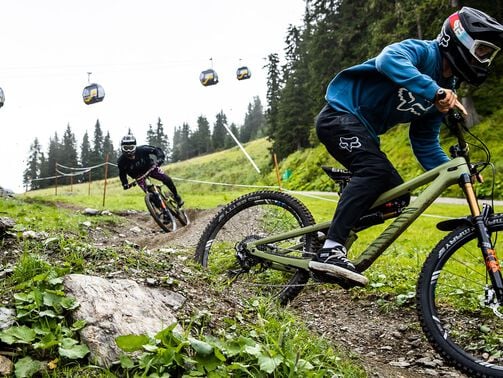Mountain bike geometry: a beginner's guide
Mountain bike geometry has evolved over the last couple of decades. Find out how each measurement on a geometry chart affects how the bike rides.

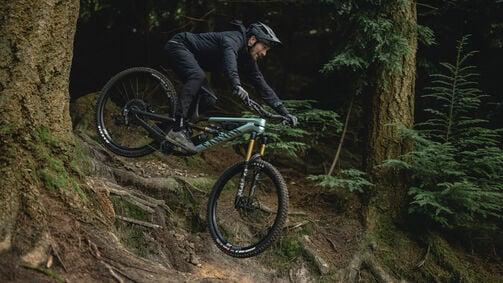
Geometry is the heart and soul of a bike. Understanding geometry not only tells you how a bike will fit, but how it climbs and descends, even how it steers, wheelies and bunny hops. The parts hanging from a frame may change with time and wear, but geometry will stay with you for the life of the bike. Getting the right geometry for your body, where you live and how you ride is the key to a long and happy relationship with your bike.
Interviewer: “Would you prefer to ride a World Cup DH track with old geometry and modern suspension or modern geometry and old suspension?”
Fabien Barel: “I would ride with modern geometry, even without suspension…”
A brief history of mountain bike geometry
In 1976, on a gnarled, rocky fireroad in Marin County, California, the early mountain bike pioneers pushed modified beach cruisers to the top, and then timed each other hurtling back down as fast as they dared. This was the Repack, the first ever mountain bike race. As a new sport, a proliferation of different designs and layouts soon flourished as tinkerers, welders and engineers played with shapes to try and create the ultimate mountain bike.
Through the 1990s and early 2000s, mountain bikes were the wild west of cycling as designers tried to find the best way to put wheels, suspension and a saddle together. By the 2010s, things began to calm down and many of the wilder designs fell by the wayside, proven unreliable, inefficient and, in some cases, downright dangerous.
This new generation of machines became much more capable, you could go a faster for longer on rougher ground, up and down the hill. Soon they began to reach the limits of the 1940s beach cruiser template that they were still loosely based on, and it was clear that they were going to need their own unique geometry to get the best out of them.
Modern mountain bike geometry
Mountain bike geometry has changed dramatically in the last ten years, and a modern mountain bike will feel very different to an older one. To accompany all these changes, geometry charts have expanded to include information not just about bike fit, but riding preferences too. While they may look like an intimidating wall of numbers at first glance, this guide will help you decipher them in a logical way.
Mountain bike geometry, explained
We believe that you will have the best ride if you’re on the right bike for you, and where you ride. Our designers, engineers and test riders pour many hours into each bike to try and find the right balance of geometry to let you focus on the trail ahead. They may seem like small differences in between the numbers, but that is where we believe that great bikes are made: in the detail.
How do I know what length seat tube I need?
The seat tube is the most important measurement for bike fit. While there have been many advances in mountain bike geometry, the length of the seat tube remains crucial. Quite simply; if it’s too long you won’t fit on the bike, and if it’s too short you won’t be able to pedal properly.
All of our geometry charts show you the range of seat heights that the frame can accommodate based on the seatpost supplied, so all you need to do is work out your seat height with a tape measure. For example, the medium Spectral with its 150mm dropper seatpost can fit riders who need a seat height between 670 and 805mm.
What seat tube length do I need for a dropper seatpost?
Where this gets more advanced is if you want to fit your own dropper post later. Say you have a 150mm travel seatpost, that means you need to account for the length of the seat tube, the post’s travel at full extension, the height of the collar and head of the seatpost. Seat tubes have got shorter to accommodate all this, but the math to calculate what will fit is much more complex.
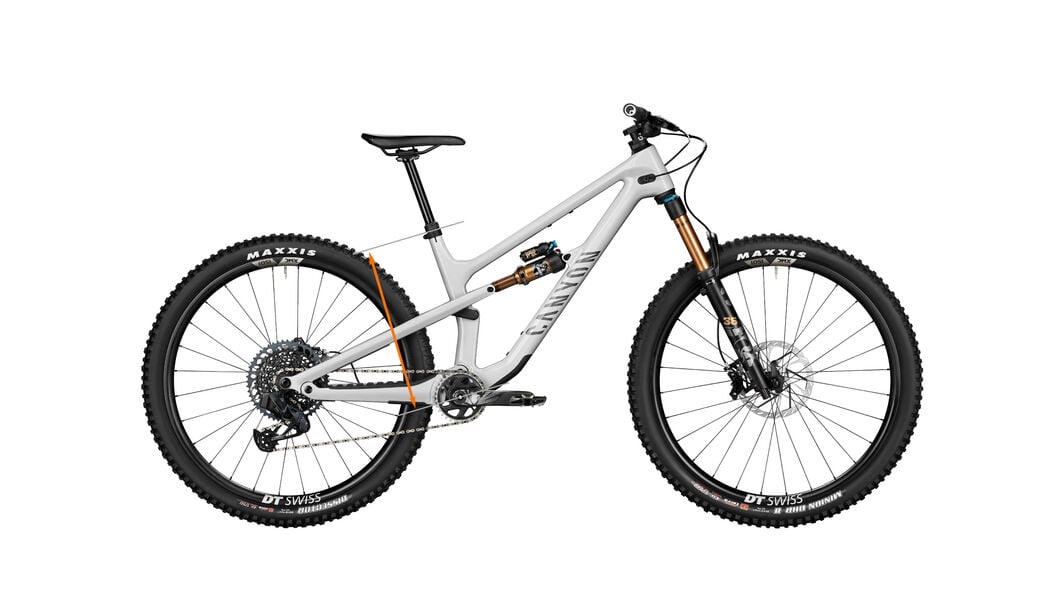
Why is reach important for mountain bikers?
Reach is one of the recent additions to the geometry chart - and is one of the most important numbers to tell you how a bike will feel out on the trail. In the past, and still today in road cycling, they used the top tube or effective top tube measurements. These tell you how far the seat tube is from the headtube, which is important to know if you are going to spend most of your time sitting down.
On a mountain bike, reach helps you understand how the bike will feel when you are standing up out of the saddle, because this is when the fun happens. The reach is the horizontal length of the front of the bike, measured from the bottom bracket to the headtube, which roughly corresponds to where your torso will be when you are stood up on the bike.
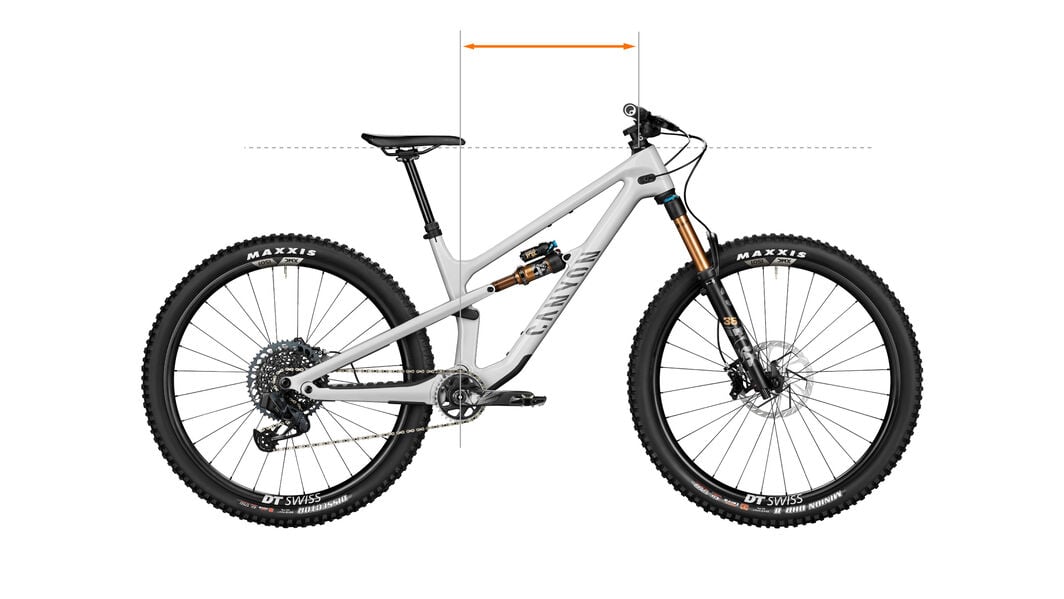
Does reach change between different ride styles of mountain biking?
Generally, you will find that cross-country bikes have shorter reaches than downhill or enduro bikes. This is because cross-country bikes tend to use longer stems, so they shorten the reach to compensate for this. Compared to the more downhill-ready Spectral with its 460mm reach in size medium, the medium Neuron has a 433mm reach. This may seem like a big difference, but the medium Neuron is designed around a 60mm stem, rather the 40mm stem we spec on the Spectral, so the total length for the rider will remain similar. For some of our bikes we have introduced the Reach+ measurement to explain the combined length of the stem and frame in a simple number.
How much does reach vary from person to person?
There is a large element of preference with reach, and many riders have a strong preference for a shorter or longer bike. A longer bike will tend to be more stable when you are riding fast, but not want to go around tight corners and wheelie as easily. A shorter bike would be described as more playful, it will be easier to navigate slow speed technical terrain and throw the bike around the trail, but the trade-off is that it will feel more nervous at high speeds. For example, our Enduro World Series-winning Strive is 20mm longer than the more all-purpose Spectral, with a 480mm reach for a medium.
There are no real right or wrong answers, providing you can fit on the bike, it comes down to a question of what you find more comfortable and/or enjoyable.
Why is stack important for mountain bikers?
Once you know how long you want your bike to be, the next question is how high the front end should be. You can make a huge difference to the height of your cockpit through your choice of bar, stem and steerer spacers. Stack number gives you the starting point - how high the frame itself is. It is measured from the bottom bracket, running vertically to the top of the head tube. This gives you your bar height in relation to where your feet are. In the past people tended to use the head tube length, but this required you to make calculations about how high that is in relation to the bottom bracket, and how steeply the head tube it is angled. Stack is a much simpler measurement that takes all of this into account.
Does stack change between different ride styles of mountain biking?
Cross-country bikes, like the World Cup race-winning Lux will tend to have lower stack heights. It has a 582mm stack height for a medium, which is considered low. This is because XC racers often like a low handlebar on the climbs as putting the weight down low keeps the front wheel planted to the ground for full attack. On the other side, a freeride bike like the Torque has a 632mm stack height, so that you will feel confident descending on steep terrain. A trail bike like the Neuron has a 614mm stack for a size medium, which is in between to help you to get the most out of the whole ride.
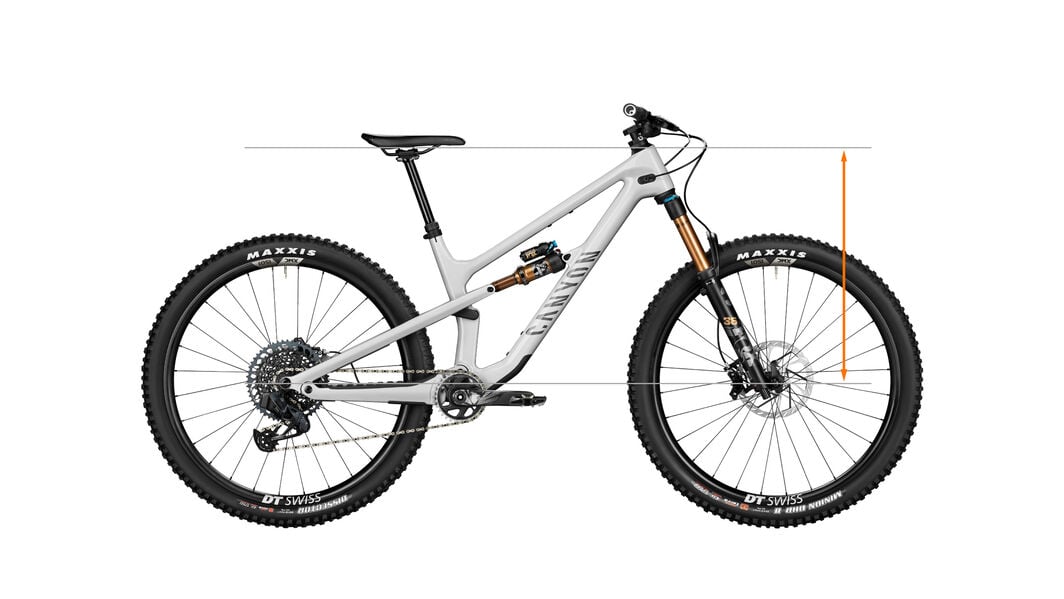
How does head angle affect how your bike steers?
The head angle, or the head tube angle as it is sometimes called, tells you how the bike’s steering will feel. If the seat tube, reach and stack give you the basic fit of the bike, the head angle is where we start to cross into performance numbers rather than fit.
What do slack and steep mean?
If you compare the Lux, and our World Cup race-winning downhill bike, the Sender, the differences are clear to see. The Lux has a 68.5-degree head angle, which is considered fairly steep. For XC riding, where the climbs are much more important, a steeper head angle gives you quicker steering at low speeds. The compromise is that when the speeds get faster the bike will feel less confidence-inspiring.
The Sender is designed solely for going downhill as fast as possible, so it has a 63-degree head angle, which we would describe as slack. This makes the steering slower so you feel more confident. A slack head angle will also make the front of the bike longer, which helps the stability. Conversely, if you tried to ride a Sender up a hill, you would find that the steering would feel slow and vague, and it would struggle to get around tight obstacles.
What head angle should a trail bike have?
In between those two extremes, the head angle can show the subtle differences in attitude between bikes. While the Spectral and the Neuron are both trail bikes, if you look at the head angles you can see the differences between them. The Neuron sits at 67-degrees, which is close to the Lux, showing that it is designed for the kind of rider who prefers more cross-country-style riding. If you prefer to focus on the descents, the Spectral is only one degree off the Sender, with a 64-degree head angle.
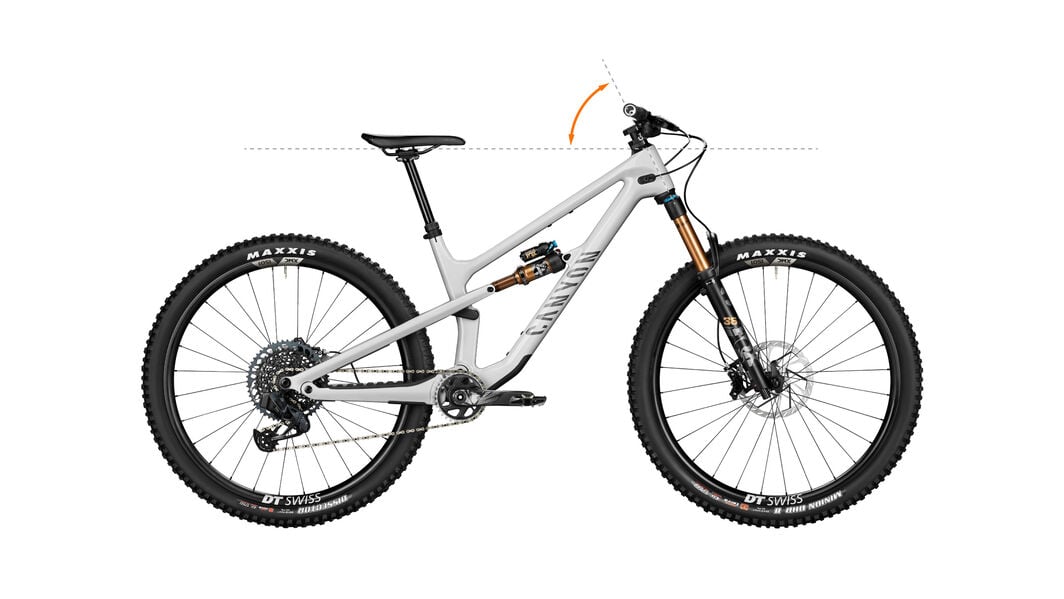
Do I need a shorter or longer chainstay?
Chainstay length plays a huge role in determining how stable your bike will be. While instability may sound like a bad thing, it is crucial to bike handling. If you had a bike that was completely stable, it would be like trying to ride a freight train and you would not be able to move it around because it would be too stable. So you need a certain level of instability, but the question is how much?
The basic rule is that a shorter chainstay means that the bike will be easier to move around the trail and play with, while a longer chainstay means that the bike will be more stable and harder to move around. Many riders prefer a shorter chainstay because these bikes tend to be the easiest to wheelie, manual and carve lines on, while a bike with longer chainstays will be more physical to ride in the same way. However, if what you want is pure downhill speed, a longer chainstay is the way to go.
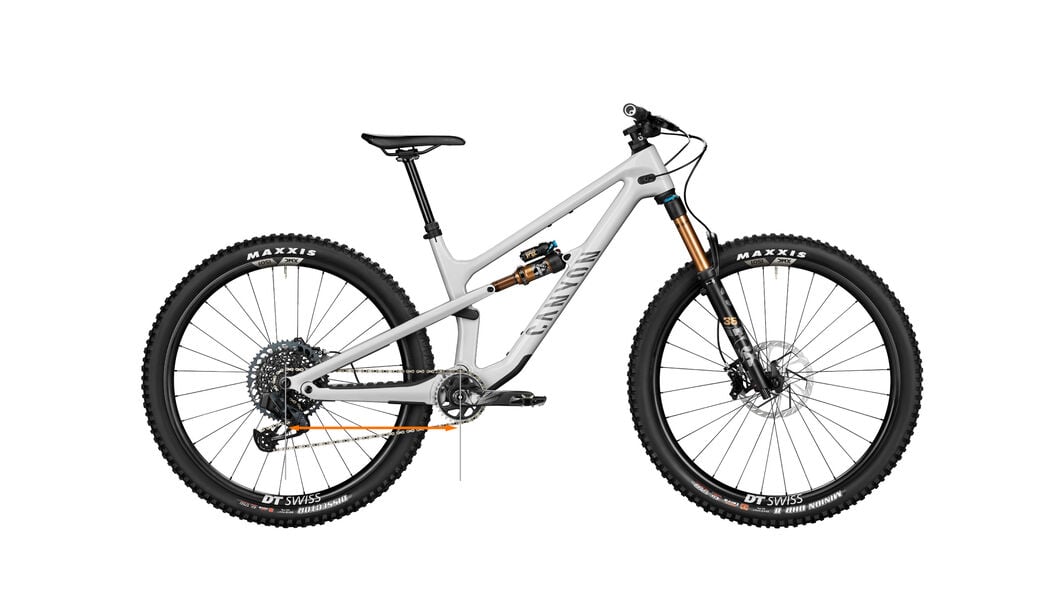
Which bikes have shorter or longer chainstays?
A race bike like the Sender is purely focused on outright downhill speed, so has a longer 445mm chainstay. XC racers tend to prefer short chainstays, not only for the quicker handling, but they believe that a shorter stay is stiffer and more efficient, so the Lux has 432mm chainstays.
On some of our bikes we have tailored the chainstay length for a particular style of riding. For example, the Spectral is offered in three versions - 29, 27.5 and mullet. The 29-inch version has 29-inch wheels front and rear for all-round ability, while the mullet and 27.5 versions have smaller wheels for riders looking to play with the trail. To reflect this, the 29 version has a more stable 437mm chainstay, while the 27.5 and mullet versions have a shorter 432mm chainstays to suit a more descent-focused style of riding.
Why are the chainstay lengths on eMTBs so different?
Electric mountain bikes tend to have slightly longer chainstays because the motor allows you to take on steeper climbs than you can on a regular mountain bike. For this kind of climbing, a longer chainstay gives you slightly better weight distribution over the rear wheel and helps keep the bike under control. Because of this, the regular Spectral 29 has a 437mm chainstay, while the Spectral:ON has a 440mm chainstay.
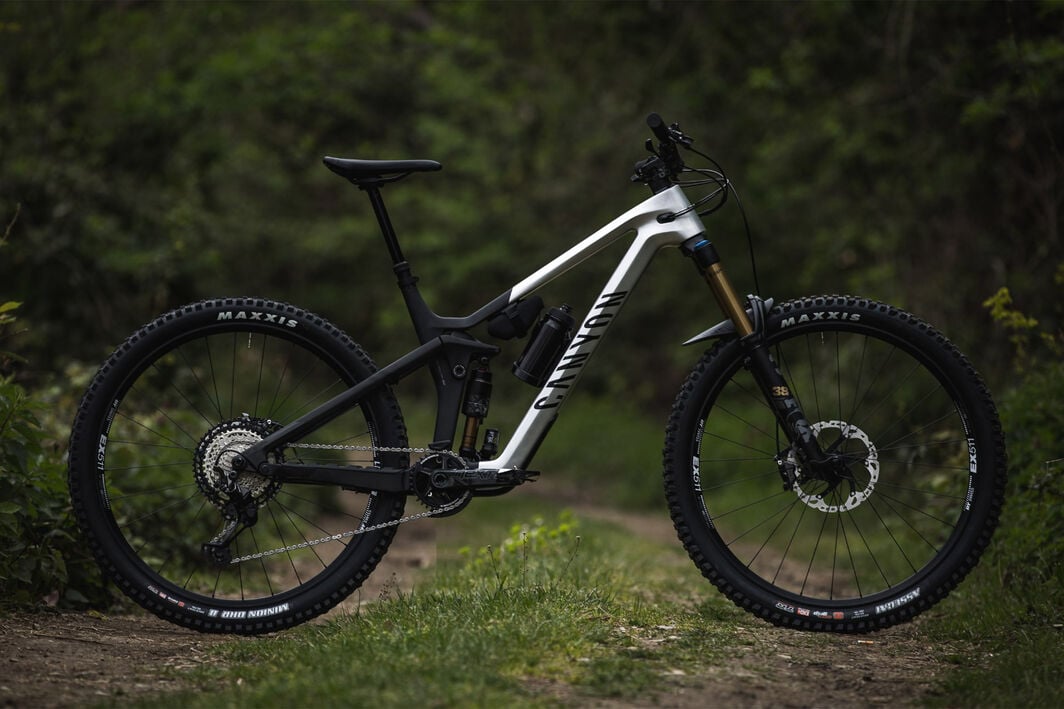
Is a steep seat angle better?
The seat angle tells you whether a bike is better suited for flatter or steeper terrain. A bike with a slacker seat tube angle will tend to put your weight back on the bike, reducing pressure on the wrists on flat terrain. A steeper seat tube angle pushes the rider forwards on the bike, increasing the weight on the wrists on flatter terrain. However, once the trail point upwards you will be in a better position to climb, with your weight central on the bike to help you maintain traction.
How does seat angle change between different styles of riding?
This tends to mean that a bike like the Strive, which designed for enduro racing, has a steeper 78-degree seat tube angle, while the Lux, which is focused on XC racing where you are more likely to spend significant time on the flat, has a shallower 75-degree angle.
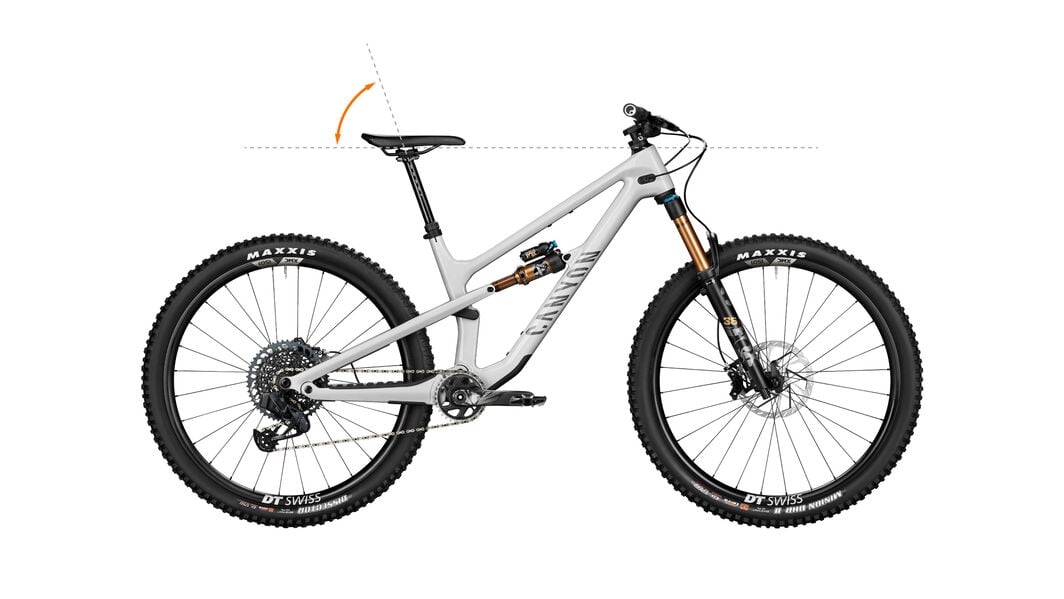
How does all this feel out in the real world?
If you would like to know how all this feels out on the trail, then you can visit one of our Experience Centres. Our friendly and knowledgeable staff will be more than happy to talk you through bike fit and even set you up for a test ride:
If you are not close to one of our Experience Centres, you can follow our social media for your country to find out where and when they are attending bike festivals and running demo events. Our national teams travel across their countries to make sure that you don’t have to travel too far to experience our bikes.
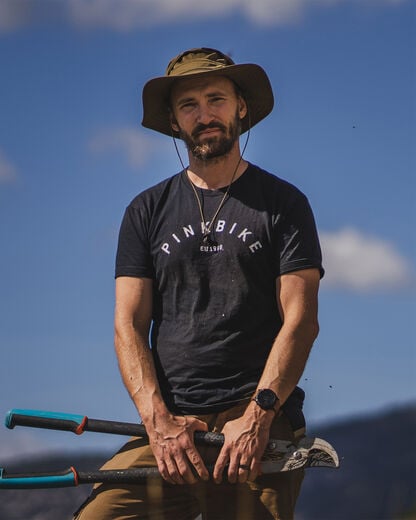
About Matt Wragg
Matt Wragg is a freelance photographer, writer and bicycle-breaker based near Nice France. After picking up his first serious mountain bike at 14, Matt was hooked. Wildly unsuccessful stints racing XC, trials, 4X and DH soon followed. After graduating with an BA in English from the University of Birmingham in 2004, he played his trade as a communications consultant in Birmingham, then London.
By 2009 he admitted that trying to fit into the real world was not his path, packed his bags (and bike) and headed for New Zealand and a season of riding downhill bikes. Since then, he has also spent time in Canada, Italy and France, chasing trails and a career as a cycling photographer and writer. In 2021 he was diagnosed as autistic and has been coming to terms with that since. His bike cellar (yes, it really is a cellar) is home to bikes that span from freeride and enduro bikes, through to road, gravel and cargo bikes, and he counts his biggest career success as having time to ride them all.
Discover our Mountain Bikes
Did this article help?
Thank you for your feedback
-
 About the author
About the authorMatt Wragg
Get to know Matt Wragg, the freelance photographer, writer, and self-proclaimed bicycle-breaker based in Nice, France. Despite unsuccessful attempts at XC, trials, 4X, and DH racing, Matt's passion for mountain biking never waned. After a stint in communications consulting, he decided to pursue his love for cycling and moved to New Zealand. Since then, he has traveled the world, chasing trails and building a successful career as a cycling photographer and writer. In 2021, he was diagnosed as autistic and has been coming to terms with it. His bike cellar is a true testament to his love for cycling, housing bikes that range from freeride to cargo.
